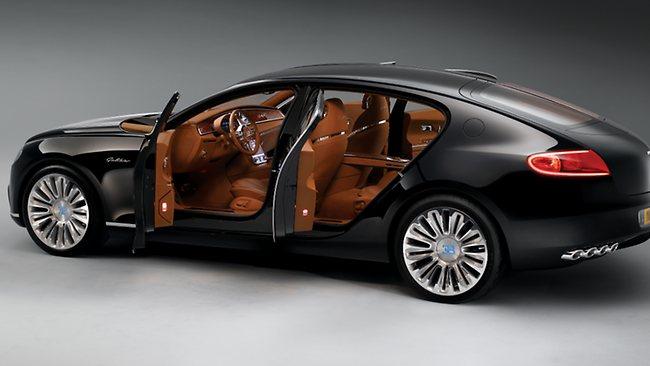Overtaking vehicle
THE new $1.6m Bugatti Galibier, inspired by the brand's previous super-collectibles, will be the fastest limo in the world.

IT produces the fastest car in the world but watching Bugatti develop a new model is like driving a 2CV through the Alps: you need patience.
After Volkswagen bought the dormant brand 13 years ago and declared its intention to build a car that could travel at warp speed, the Veyron, there were years of unexplained delays.
The man who wanted to boldly go where no one had gone before was industry patriarch Ferdinand Piech, the head of Volkswagen and a grandson of Ferdinand Porsche. His CV reads like a history of the car but there was one box unticked. Piech wanted to bust the performance benchmarks set in the 1990s by the McLaren F1 supercar. Not only was it made by the British but, even worse, it had a BMW engine.
However, where the F1 was lightweight and driver-focused, the Veyron had to be a statement of luxury, too. Art and science, to echo Bugatti founder Ettore’s own inspiration from his family of sculptors and architects.
Getting both things right proved difficult. The Veyron is no longer than a Mazda hatchback yet the engineers were trying to fit an 8L quad-turbo, 16-cylinder engine behind the cabin. It needed all-wheel drive to harness all that power and a seven-speed, double-clutch gearbox strong enough for a train. At slow speeds, it had to be smooth, hand-stitched comfort and machine-finished sheen – an opera carriage. Then it had belt to 100km/h in under three seconds and race on to exceed 400km/h when the cameras were watching.
Eventually, it worked. Every engineer knew Piech’s ego was on the line and the price of failure was not worth contemplating. Next to a go-kart like a McLaren F1, the Veyron is the Starship Enterprise. It takes 10 radiators to keep all its innards from spontaneously combusting and weighs 1.9 tonnes, despite acres of featherweight carbon fibre. At top speed, it drains its fuel tank in minutes. Even at a starting price of $1.8 million, the project hasn’t made money.
Instead, Piech set out to make a statement and ended up with an oration, applauded by car enthusiasts everywhere. More people have been into space than driven a Veyron at top speed, but at least we know it can be done.
Along the way, the Veyron has spawned many variants including a targa-roofed convertible and Super Sport version with more power – 882kW – that goes even quicker than the original to set a record of 431km/h. It had to. It briefly lost the crown to some upstarts from the US.
Almost as slow as Veyron development were sales. Since its launch in 2005, it has taken six years to fill the order book to its limit of 300 – that’s less than a buyer a week. It has, however, attracted a rollcall of celebrities who must have the ultimate. It’s difficult to imagine the likes of Tom Cruise, Simon Cowell, Cristiano Ronaldo and Beyonce in any other sort of queue.
The last coupe was ordered in June and the Veyron continues as a targa version, the Grand Sport, which is three years into filling its target of 150 buyers. But, happily, the brand is not without a new direction. Two years ago it assembled an elite group of customers to reveal a four-door prototype called the Galibier.
Inspired by super-collectibles from its past, such as the Type 35 and Type 57S, the Galibier evolves the horseshoe grille and striking bodywork of the Veyron but puts the engine upfront. The two-fold bonnet hinges along the car’s central spine to show a twin-supercharged version of the Veyron’s 16-cylinder engine.
With a price tag expected to start at $1.6 million, the shrewd visitors to Bugatti’s headquarters in France realised immediately that it would be cheaper than an original Bugatti four-door, which are rarer than space dust, and gave it the thumbs up.
Amid the chateaux and wineries of Alsace, where Ettore set up shop a century ago, the Molsheim factory will be expanded to cater for the 3000 orders the car is expected to attract. That would make it an all-time Bugatti best-seller and since – unlike the Veyron – it’s expected to be built in right-hand drive, Australians will be able to help reach the target. As long as they have the requisite patience.
While the sedan won’t be as exclusive as the coupe, and it’s very unlikely to be as quick, Bugatti is still keen to push the boundaries. There’s talk of a hybrid, although the Galibier is more likely to advance the cause of greater luxury. Leather, carbon fibre and aluminium are all very well, but what says precious better than fine porcelain trim?


